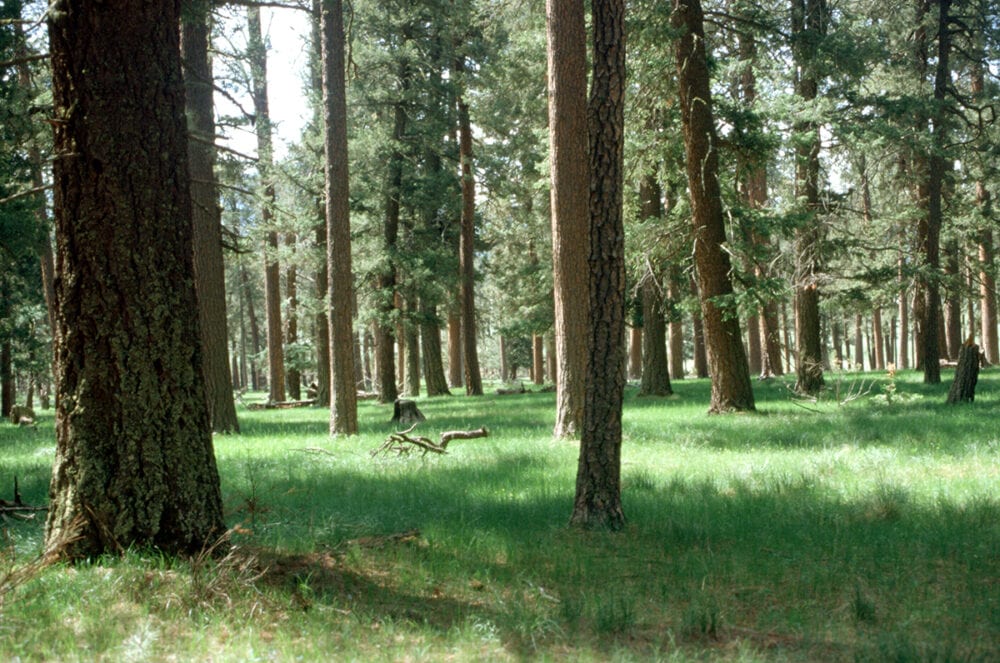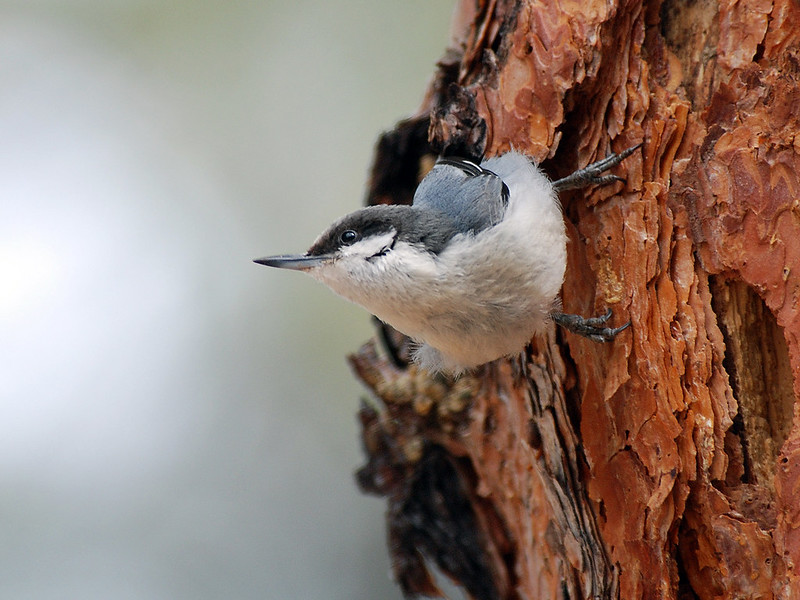
By Terry Foxx
One of my favorite tree species is the lofty ponderosa pine (Pinus ponderosa) with its straight trunk, vanilla and butterscotch scented bark, and branches with needle-like leaves that hover above my head. The trees appear to me to be like a person, standing tall and stately, with a straight trunk and branches reaching out like arms beckoning a hug.
Standing beneath a tree, I tip my head back to see what is living or foraging in the treetop. To my delight, I may observe an Abert’s squirrel chattering, a woodpecker searching for insects, or nuthatches hopping down the tree headfirst.
One of my favorite places in the Jemez Mountains is the history grove in the Valles Caldera National Preserve. The widely spaced ponderosas with the grassy understory are a reminder of how our forests looked before fire suppression. They were a mosaic of open stands, interspersed with meadows.
In the history grove, the ponderosa pines stand as witnesses to the past. The oval wounds in the bark are bark-peel trees from when Native Americans exfoliated sections of bark in the spring to obtain the sweet inner cambium for food. The trees marked with crosses remind us of sheepherders and their lonely existence. And the triangular wounds at the base of the tree, called “cat faces,” tell the story of fire and survival. Many of the large trees in the history grove are 200 to 300 years old. Within their growth rings are stories of fire, injuries, and people.

Loggers and ranchers called older and larger trees “yellow pine” because of the yellowish-orange puzzle-like bark and the young, darker trees “blackjacks.” It takes a tree about 40 years for the bark to change from black to yellow. The bark patterns also become furrowed and more puzzle-like as the tree ages. The thick bark protects the tree from low-intensity or surface forest fires. However, years of fire suppression have created conditions for hot-burning crown fires that kill the trees.
Each natural growing tree is a miracle of nature. It takes many years before a ponderosa pine begins to produce cones that hold the seeds. Every three to five years the tree produces numerous cones. But from the countless seeds produced, only a few seeds sprout and grow. That tiny germinated tree must survive fires, insects, and competition for resources. I am amazed at the ruggedness of the species when I see a tree growing in harsh environments like rocky cliffs, dry canyons, and steep slopes. A mature tree represents resilience and survival!
In the past 20 years, the Cerro Grande and Las Conchas fires have burned over 200,000 acres of forest. The first two weeks of May is the twentieth anniversary of the Cerro Grande Fire of 2000, an event that changed the physical and emotional landscape of the community.
My upcoming book, Resilience and Renewal, a Landscape and Community Twenty Years After, will soon be published by the Los Alamos Historical Society in honor of the twentieth anniversary of the Cerro Grande Fire and its impacts on our community. When the museum opens, they will have a display entitled “Resilience and Recovery.” In the meantime, you can explore this exhibit online.

How much does a mature Ponderosa Pine grow per year? We have one in our back yard that is approximately 60′ tall.
Hi Elizabeth! Great question. A mature ponderosa can grow to be about 60 to 100′ tall, so yours might be done growing or could still grow another 40′! According to the Arbor Day Foundation, ponderosas grow 13–24″ per year. Once trees are done growing, they won’t get taller, but continue to get wider.